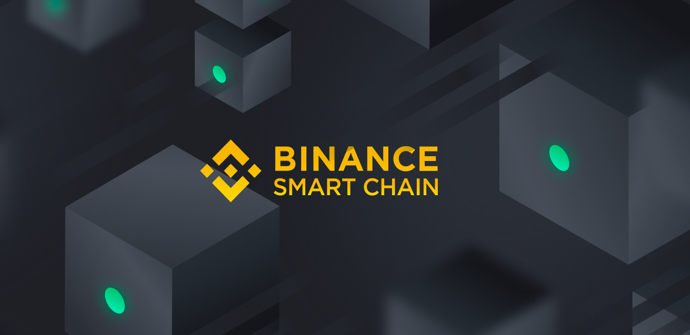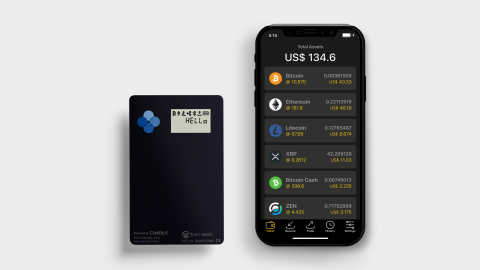Table of Contents
- Part 1: How To Add BEP-20 (BSC) Tokens on CoolWallet Pro and S
- Part 2: A Short Guide To Binance Smart Chain (BSC)
- What is Binance Smart Chain?
- What are BEP-20 Tokens?
- Binance Coin (BNB) vs BEP2 vs BEP-20 Tokens
- BSC Attributes
- How do BSC Validators Work?
- Staking
- Conclusion
The CoolWallet team has some fantastic news for our loyal community today. Our talented developers have been working tirelessly on bringing you the most innovative assets to our hardware wallet and today we cross another major milestone.
The CoolWallet Pro and CoolWallet S now support Binance Smart Chain (BSC)’s amazing ecosystem of BEP-20 tokens!
Binance Smart Chain, as you may know, has had an incredible 2021 so far, taking full advantage of Ethereum’s gas and network congestion issues to attract some of the crypto industry’s best projects and developers thanks to dependable performance, affordability, and scalability. At present there are over 780 projects building on BSC.
Did you know BSC was the most used blockchain during Q2 2021 (April to June) and that it reached 13.1 million transactions on 29 July 2021, which is 10 times of rival chain Ethereum? Binance Smart Chain and its mushrooming ecosystem of smart contract-powered tokens mean business, and they’ve become an essential addition to the Coolwallet Pro.
This guide has 2 parts:
- In part 1, we’ll get straight to business and show you how to add BEP-20 tokens to your CoolWallet Pro and S.
- In part 2 further down, we’ll take a quick look at what BSC and BEP-20 are, how they work, and how they are different from and compatible with other blockchains.
First things first, here’s how to add BEP-20 tokens on your CoolWallet!
Part 1: How To Add BEP-20 (BSC) Tokens on CoolWallet Pro and S
To add your BEP-20 token on the CoolWallet, please follow the steps below:
Step 1: Go to BscScan
Visit https://bscscan.com/, enter your token details (name/address) and click on the Magnifier.

Step 2: Copy contract address
From the token page, please copy the contract address of the specific BEP-20 token. (We will use PancakeSwap Token for example)

Step 3: Add Custom BEP-20 Token on CoolWallet App
Open the CoolWallet App, go into Settings, select Manage Wallet, click the Add Crypto icon (+), and select Add Custom Token.


Step 4: Complete Token Adding Process
Paste the BEP-20 token contract address which you obtained from the Etherscan website or other source. Or scan the obtained BEP-20 token QR code. Once entered, the token details will appear, please press Add to complete the token integration. *BEP-20 token will not be added if the required token information is incomplete.


Step 5: Set Custom Token to Display on Homescreen
Go to Manage Wallet, and make sure you toggle your newly added custom BEP-20 token to display on your app’s home screen. And you’re done!

Part 2: A Short Guide To Binance Smart Chain (BSC)
What is Binance Smart Chain?

Binance Smart Chain (BSC) is a blockchain network built for running smart contract-based and decentralized applications. BSC runs in parallel with Binance’s native Binance Chain (BC), home of its BNB asset, with dual architecture, which allows users to get the best of both worlds: the high transaction capacity of BC and the smart contract functionality of BSC.
Furthermore, Binance Smart Chain also implements the Ethereum Virtual Machine (EVM), which allows it to run Ethereum-based applications like Metamask.
This also enables developers to build decentralized applications (Dapps) and allow users to control their digital assets cross-chain with low latency and large capacity.
What are BEP-20 Tokens?
BEP-20 is a Binance Smart Chain token standard and technical specification that builds on Ethereum’s popular ERC-20 token standard, helping to define how and by who these tokens are spent. BEP-20 is similar to Binance Chain’s BEP-2 and ERC-20 and therefore compatible with both. The goal of BEP-20 is to establish a flexible format for developers to create a versatile range of different tokens with different use cases.
Both native assets, as well as existing cryptocurrencies can be turned into BEP-20 tokens, for example, the value of a coin like XRP or LINK can be pegged or wrapped to a “Peggy” BEP-20 equivalent, and live on the Binance Smart Chain. Both BEP-2 (Binance Chain) and BEP-20 (BSC) transactions incur BNB gas fees (significantly lower than that of ERC20 though).
Binance Coin (BNB) vs BEP2 vs BEP-20 Tokens
BEP2 is a token standard for Binance Chain, while BEP-20 is a token standard for the Binance Smart Chain. BNB is the native utility asset of both chains that is needed for transaction fees. So, in order to transact in Binance Smart Chain and its growing DeFi platforms, you will require BEP-20 tokens like Cake but also BNB (BEP-20) for the transaction fees.
While BEP-20 tokens cater for decentralized smart-contract use cases, Binance Coin (BNB) is the Binance ecosystem’s native utility token which can be used both for BSC and BC. They are mainly used to pay for transaction fees on the BC and Binance DEX platform, staking, and asset transfers. BNB can also be used to run smart contracts on BSC. Interestingly enough BNB started life as an ERC-20 token in 2017, and only moved over to its chain in April 2021!
For those who want to participate in network security or earn additional BNB rewards, it can be staked on a smart contract. And should they wish to, they can delegate their stake to a BSC validator of their choice and earn proportional rewards.
Furthermore, validators have the power to decide how much of the BNB they collected from gas fees gets to be redistributed to their delegators.
BSC Attributes
| Independent Blockchain | While it runs in parallel with BC, it is a standalone blockchain. This means that even if BC stops operating, BSC will continue to run its technical and business functions. |
| Ethereum-compatible | Smart contracts, which are Ethereum-compatible, are supported by BSC. Through this feature, developers can build or migrate Dapps, tools, and other ecosystem components on the BSC network without much friction. |
| Supports staking and community-based governance | The platform implements a proof-of-stake (PoS) consensus model. BSC’s native token, the Binance Coin (BNB), can be staked to contribute to network security and vote on community governance protocols. Its PoS model also enables it to process transactions faster, putting it above networks that still implement full proof-of-work (PoW) systems. |
| Native Interoperability | Binance Chain and BSC can freely communicate with each other without friction, despite BSC not being a layer 2 solution. This makes it seamless for users to move their cryptocurrencies between BC and BSC. |
| Proof of Staked Authority | BSC combines both Delegated PoS and proof-of-authority (PoA) to achieve network consensus and maintain blockchain security. PoA is known for its capacity to thwart 51% attacks, as well as its tolerance for Byzantine attacks. In this model, there are elected validators who take turns in confirming transactions on the network and are tasked to produce the blocks in a PoA manner, which puts the amount of their stake and their reputation in the community into consideration. To become a validator, a user has to stake BNB. This consensus model allows BSC to achieve around 3-second block times. If a block proposed by the validator gets added to the chain, they receive the transaction fees incurred in that block as their reward. |
How do BSC Validators Work?
A validator quorum is required to secure the BSC network. The blockchain has 21 validators that are elected by BNB stakers every 24 hours. Anyone can be a candidate for election as a validator, but only those who belong to the top 21 highest-staked nodes will be chosen for the next validator set.
There is an “epoch” period for the platform, where validator sets can update the BSC network as needed. Every epoch period consists of 240 blocks.
BSC also implements “slashing” to disincentivize malicious actors from validating inaccurate transactions or double signing. Slashing is designed to expose an attacker and make their attempts extremely expensive to execute.
Staking
Staking involves BNB holders placing their “bonded” tokens in a staking pool. Then, they can delegate their tokens to a chosen validator or candidate. They can re-delegate their tokens to another validator as soon as the election for the next validator set begins. Elected validators have the power to distribute their blocking reward to their delegators.
In order to remain compatible with Ethereum, BSC implements its staking logic on BC to support this feature. This means that token bonding or delegation happens on top of the BC network, not BSC.
Conclusion
The Binance Smart Chain has brought a speedy and low-cost Dapp platform with incredibly innovative BEP-20 assets for crypto users to enjoy. We hope you enjoy these incredibly smart new crypto assets and take full advantage of all the features that CoolWallet has to offer!

DELIVERED EVERY WEEK



